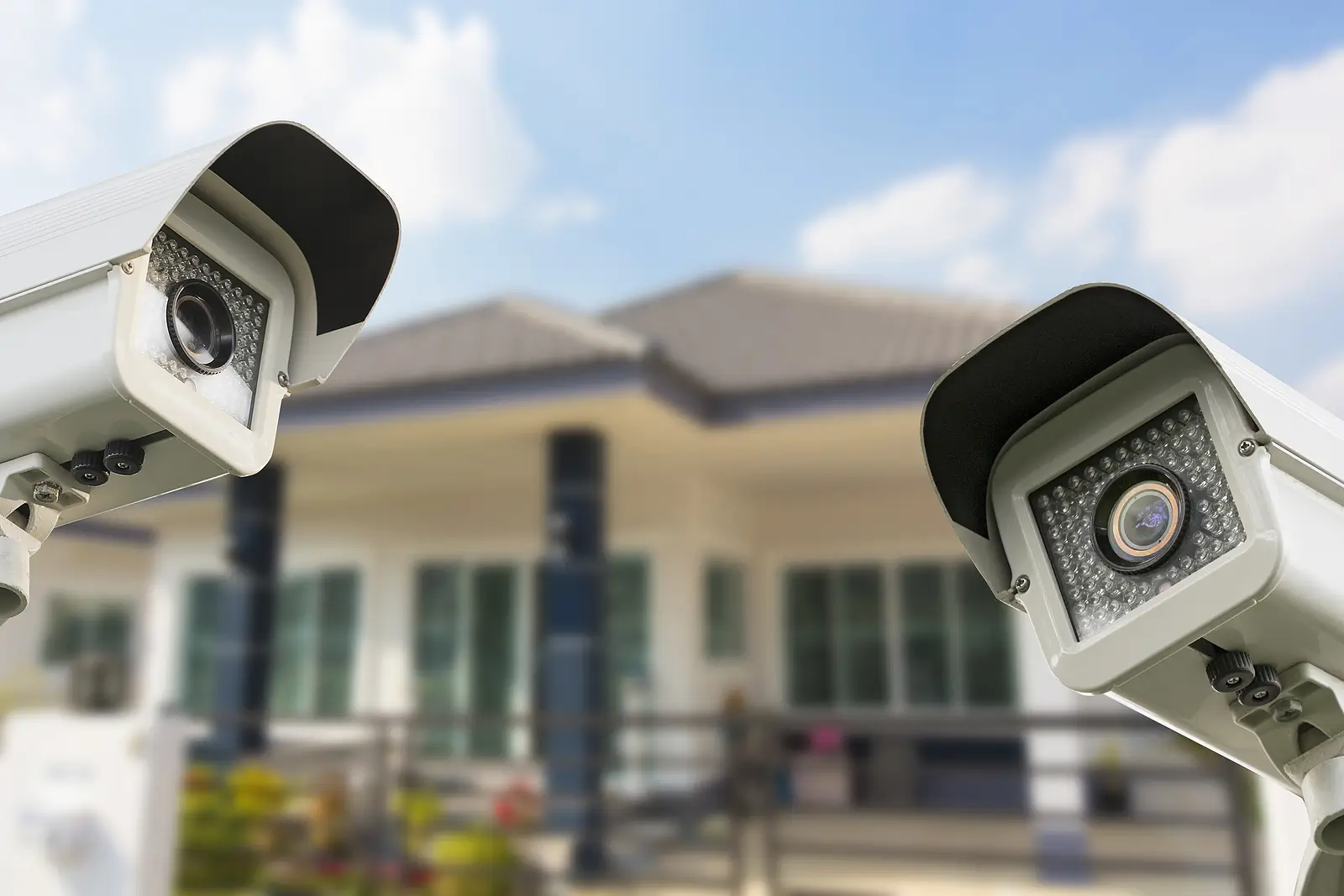One of your main duties as a landlord is prioritizing safety for your tenants, which means that your rental property should have safety and security measures to ensure that. Listed below are home security systems and additional safety measures you can install to address safety concerns.
Key Highlights:
- Strengthen outdoor defenses with security cameras, motion-sensor lighting, reinforced locks, and visible alarm systems to deter potential intruders before they get close.
- Ensure indoor protection by installing door and window sensors, smart locks, and smoke and carbon monoxide detectors, which are also required by California law.
- Prioritize fire safety by equipping each floor with fire extinguishers and maintaining clear, accessible evacuation routes in case of emergencies.
- Address non-physical risks by implementing cybersecurity measures for smart home devices and covering outlets to prevent electrical hazards, especially around children or during floods.
- Weigh the pros and cons of DIY systems carefully, as improper installation may leave your property vulnerable despite lower initial costs.
A. Outdoor Security
Your first line of defense comes from outdoor security. They can sometimes even be enough to deter potential burglars. You can install the following features to increase security.
Security Cameras
One sure way to monitor your entire property is to install surveillance cameras around the perimeter of your rental property, particularly in vulnerable points like entries. It should cover driveways, doors, walkways, and the yard. If you can, purchase cameras that provide features like night vision, motion alert, and cloud storage.
Entry Point Reinforcement
Make sure you have strong locks for all entry points. Doors and windows are a given, but if you have an attached garage, you should also add additional locks since the entry door to your rental home can serve as an access point. Use deadbolts or smart locks to make it harder to break in. This should be included in your routine inspections to check whether the locks and hinges are still holding.
Exterior Lighting
Lights with motion detectors are sometimes enough to scare burglars away, since they use the cover of night to sneak in. They are also much easier to identify through security cameras if the environment is brighter. These should be installed in both the front and back yards. If you can, add one to your front door and garage door.
Alarm Systems
Your exterior doors should have alarm systems that only you and your tenants can disarm. Some smart home systems can only be accessed through RFID, biometrics, or PIN codes. Opt for alarms with app connectivity so you get notified when your alarm system detects any suspicious activity.
Proper Landscaping
Before you install security cameras or other safety devices outside, your landscape should not interfere with their functions. Tall trees, for instance, may block your surveillance camera's line of sight. Motion sensors should also be placed in an open space without being covered by grass or shrubbery.
B. Indoor Security and Safety
When it comes to tenant safety, it's best to double down on your security methods. That means installing security systems within the rental property as well.
Door and Window Sensors
When intruders manage to bypass locks and other security measures outside, you should set up alarms that would go off upon opening entry points like doors and windows. You can use magnetic sensors and place them on critical entry points.
Indoor Security Cameras
This can be a good option if you have a multi-unit rental property and have common areas, but it would not be advisable for single-family homes, since it can feel like an invasion of privacy for your tenants.
Smart Locks
Smart home security systems are becoming increasingly popular, and aside from strong security, this can help you keep satisfied tenants. Key features include automatic locks, biometric access, and remote access, giving your tenants better control over who can enter their rental unit.
Smoke Alarms and Carbon Monoxide Detectors
For fire safety, installing smoke and carbon monoxide detectors is crucial. In fact, they are legally required by California law. Protection should not only be against potential thieves. For peace of mind, check the detectors during regular inspections to ensure that they are working as intended. You should also check gas appliances and electrical systems for overall safety.
Fire Extinguishers
Smoke detectors are meant to inform you if there's a fire, but you still need a way to minimize safety risks and property damage. You should have fire extinguishers on each floor to put out small fires or create a safe route towards the exit. Check your local fire regulations to ensure legal compliance.
Clear Evacuation Routes
Your residents should know where the emergency exits are in the event of a fire or other natural disasters. These exits should be free of any blockages to prevent delays or from keeping your tenants trapped. While it needs to be left open from the inside, make sure it cannot be opened from the outside to protect your residents.
C. Other Security and Safety Measures
Electrical Outlet Covers
Outlets can be dangerous when exposed to water, so during floods, they pose a threat of electrocution. Even without the threat of natural disasters, it's best to safeguard outlets for small children or pets. Be sure to purchase socket protectors that are actually waterproof.
Cybersecurity Checks
Your property's safety isn't limited to physical circumstances. If your home security is connected to a network, you need to make sure that it's secure. That means choosing a strong Wi-Fi password, updating your firmware, and securing routes. If you're unsure how to secure your system, you can hire professionals to do a sweep for you.
Purchasing Insurance
While everything else is meant to keep you and your residents safe, insurance is for your rental property. Depending on your insurance premium or plan, it can cover property damage, medical bills, or legal costs. Research the insurance plan carefully for necessary coverage and peace of mind.
Setting Up DIY Home Security: Is It Worth It?
DIY systems can be a great way to reduce costs, but some risks come with home security systems you create or set up yourself. For one, some devices are too complicated to install unless you're tech-savvy.
Installing locks without the help of a professional can also go wrong. One mistake can lead to the lock being faulty, which leaves you and your tenants vulnerable to intrusions. You need to assess your own skills in putting up security measures and determine whether you really are saving costs without compromising safety.
Need Help? We Got Your Back
Securing your rental property is no small thing. Tenant protection is a lot of just one person, even if you only have one resident, so let us help. Harland Property Management can provide you with around-the-clock services for emergencies, as well as regular maintenance to keep everything in good condition.
Nothing gives you more peace of mind than leaving a professional at the helm. Our goal is to keep you and your tenants happy. Contact us today, and let's talk!


